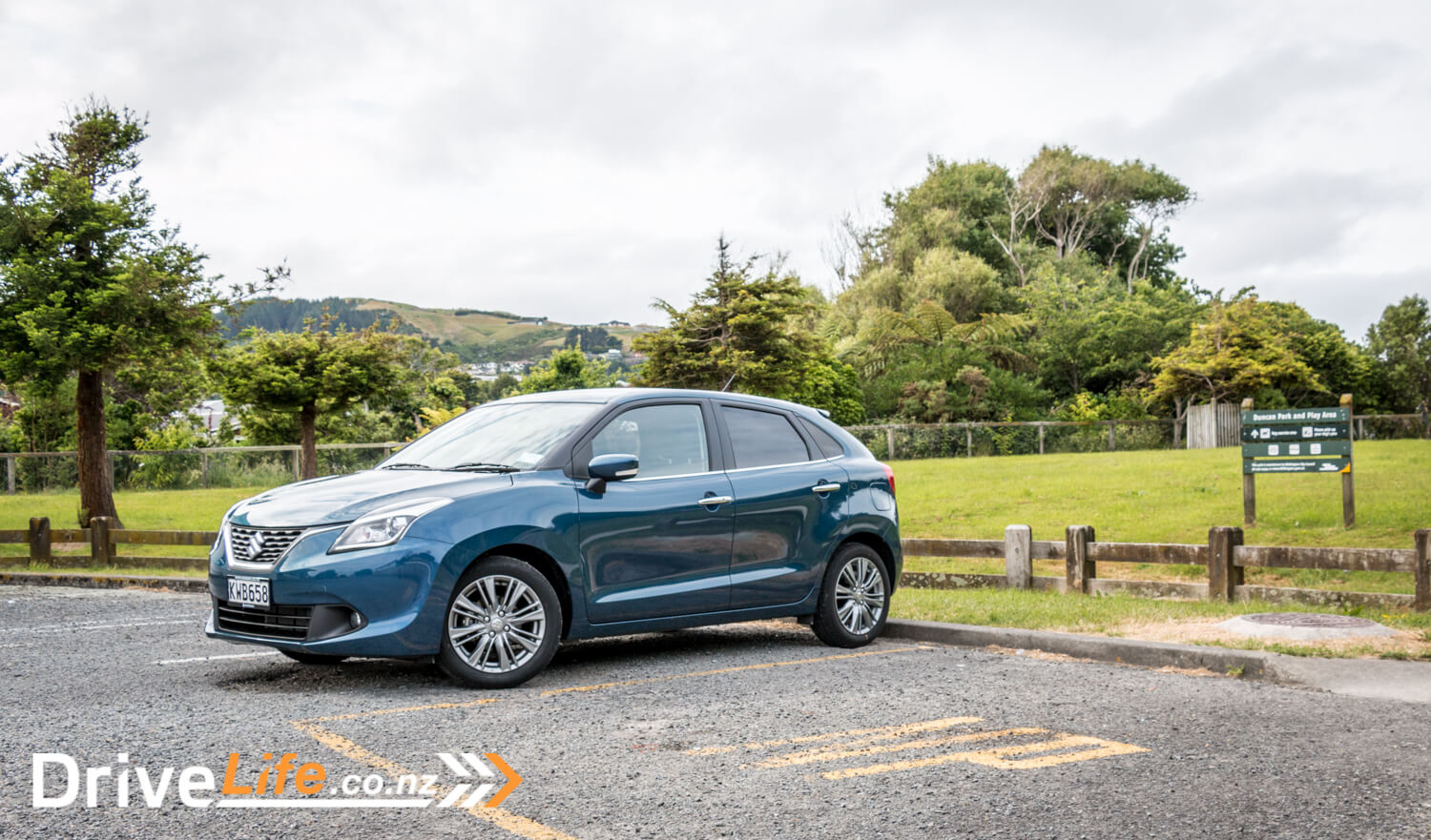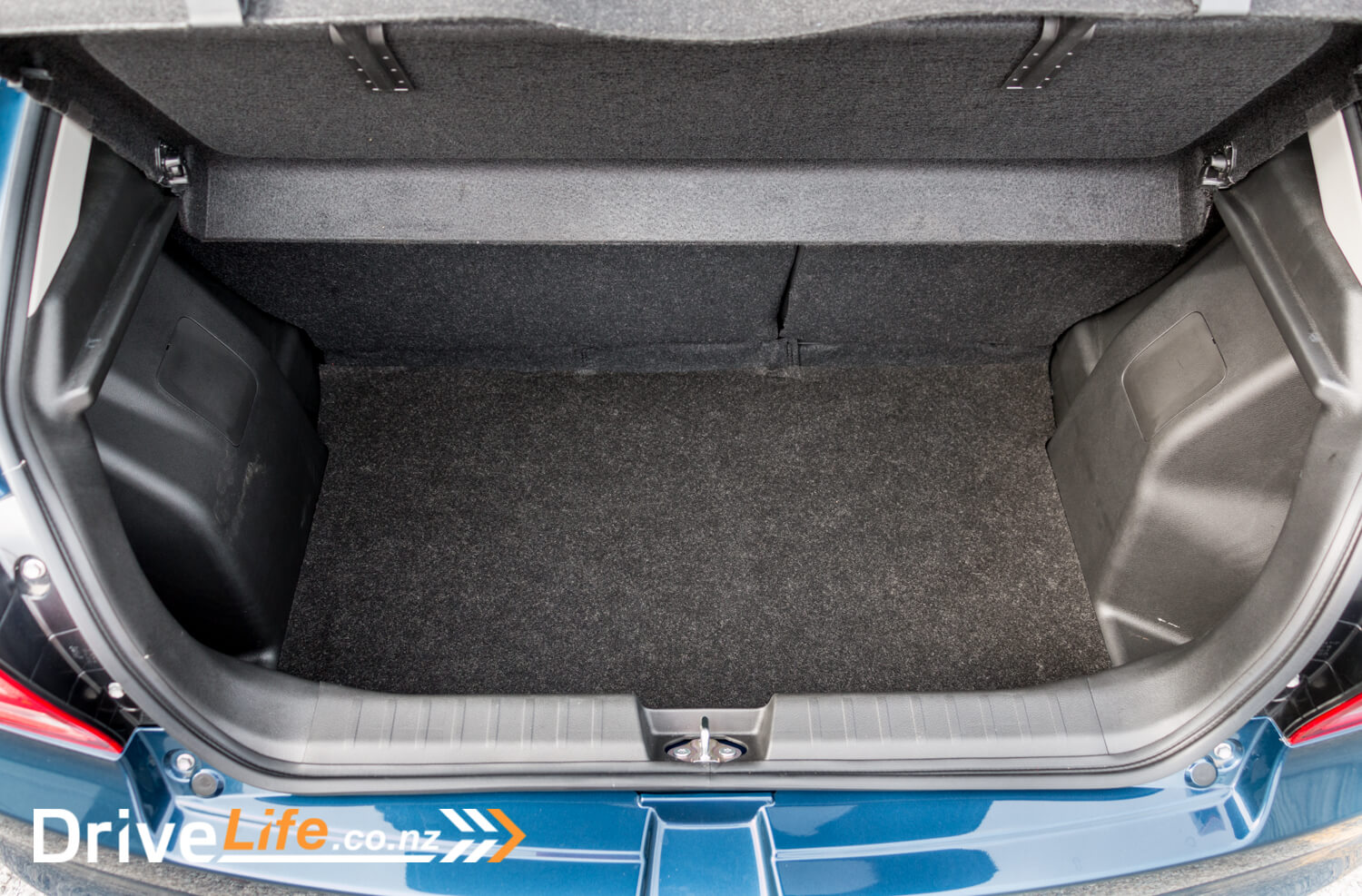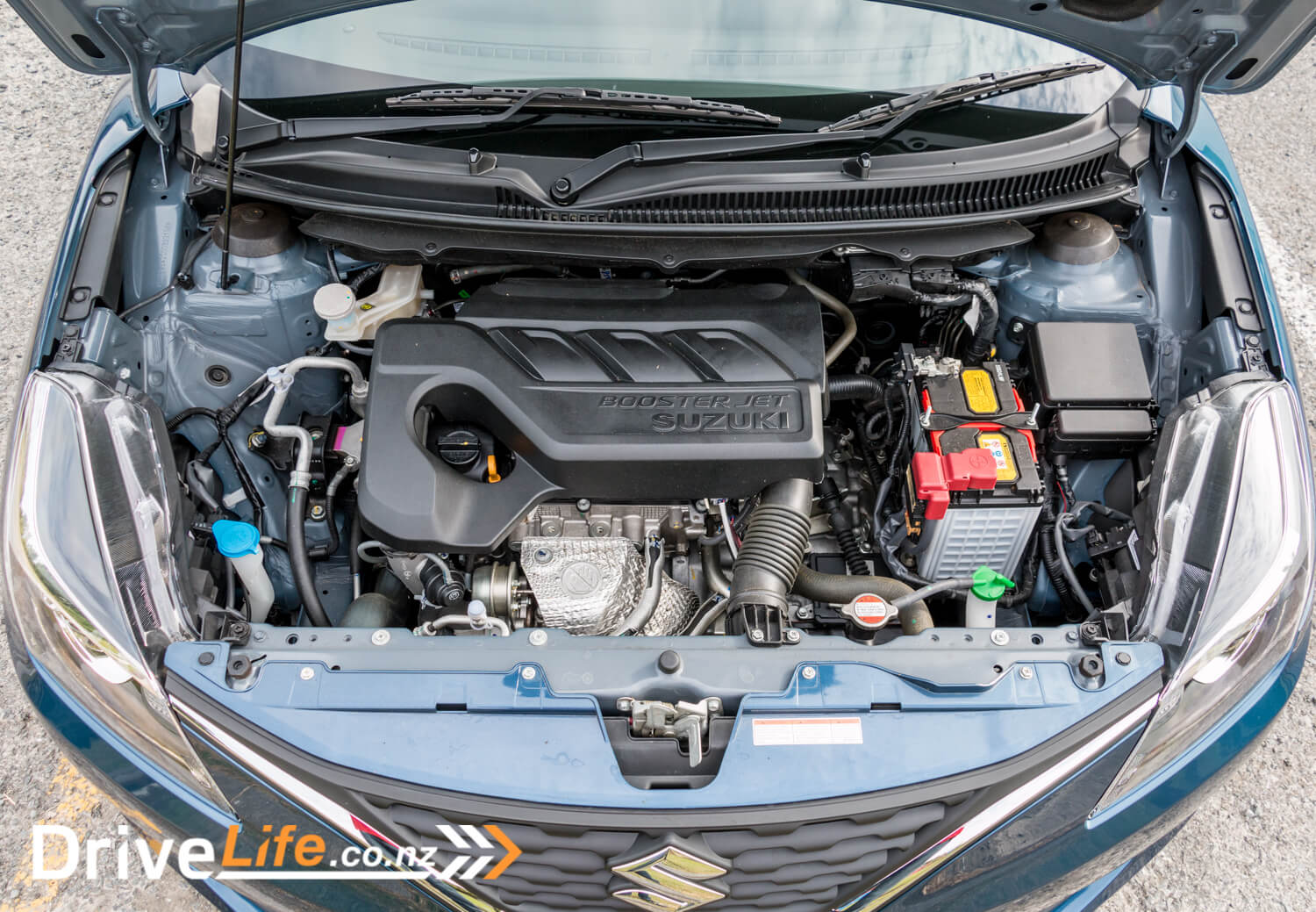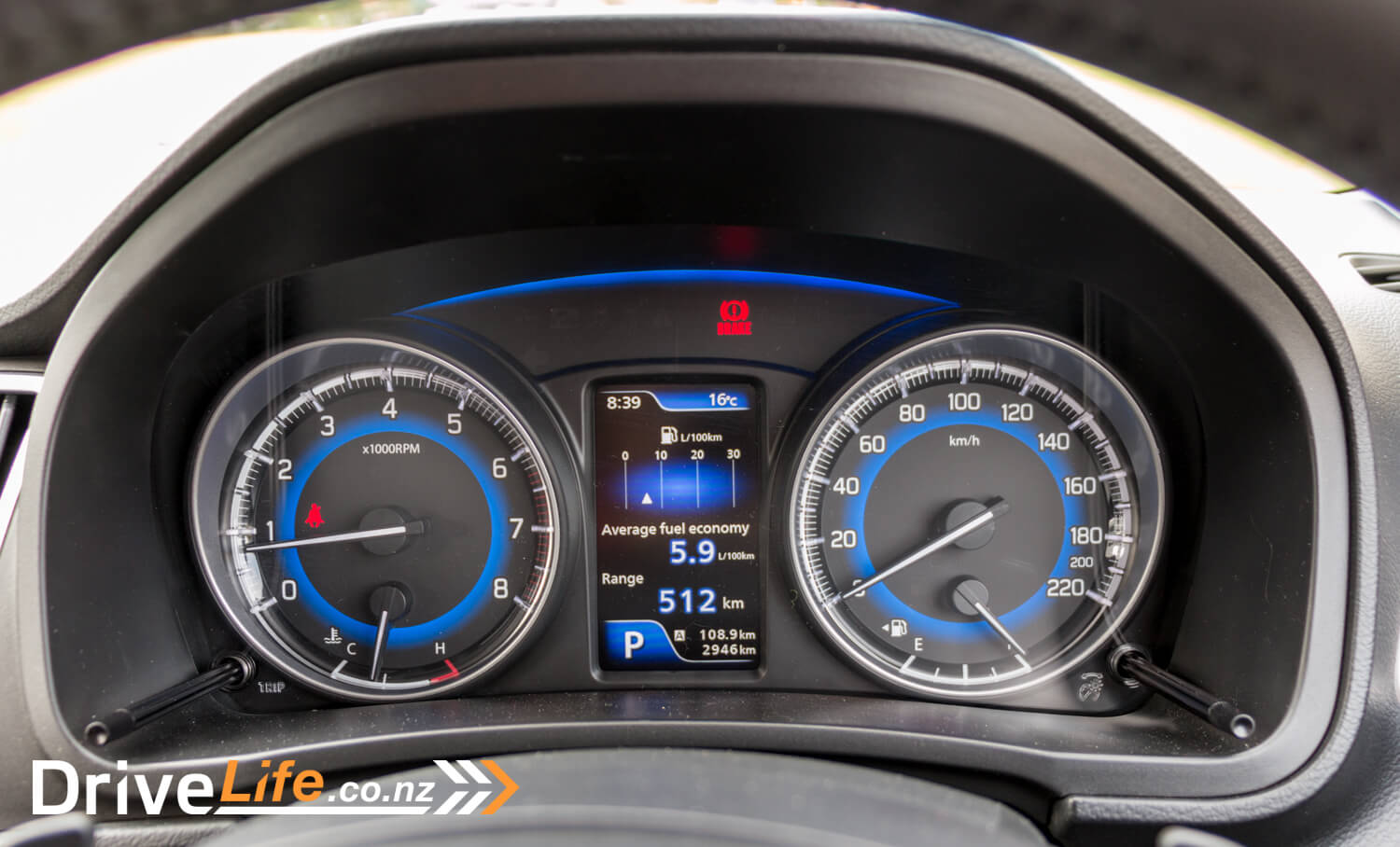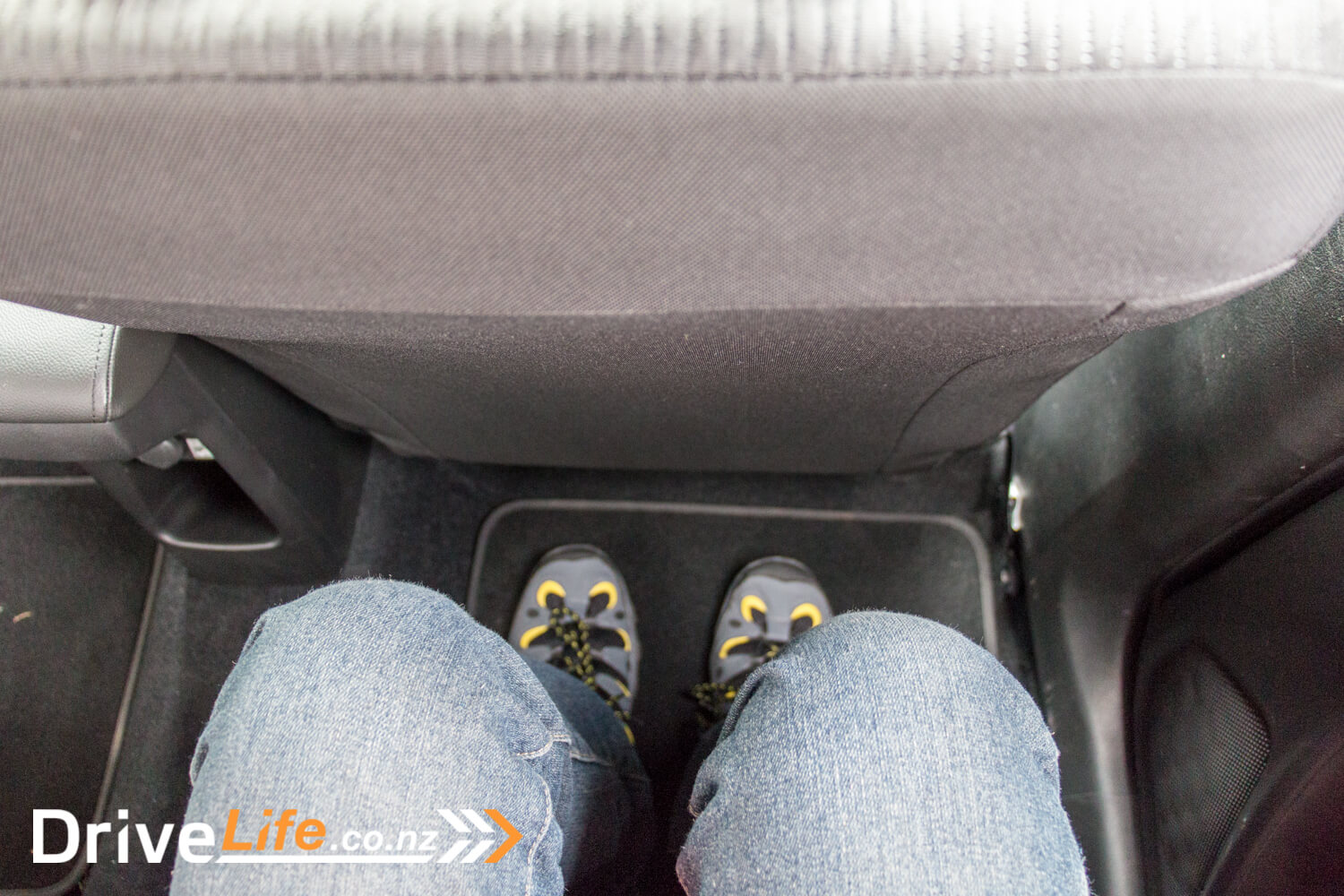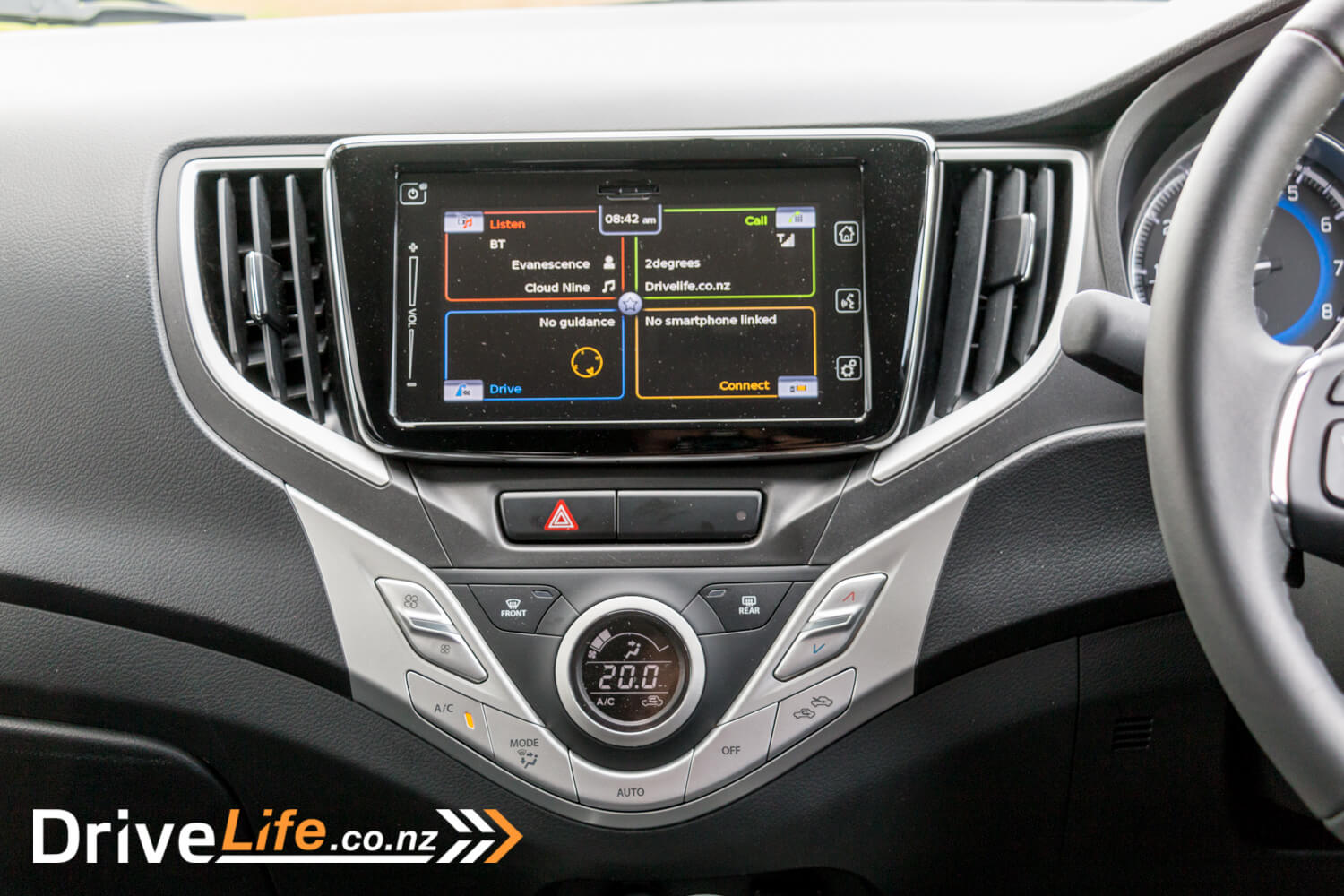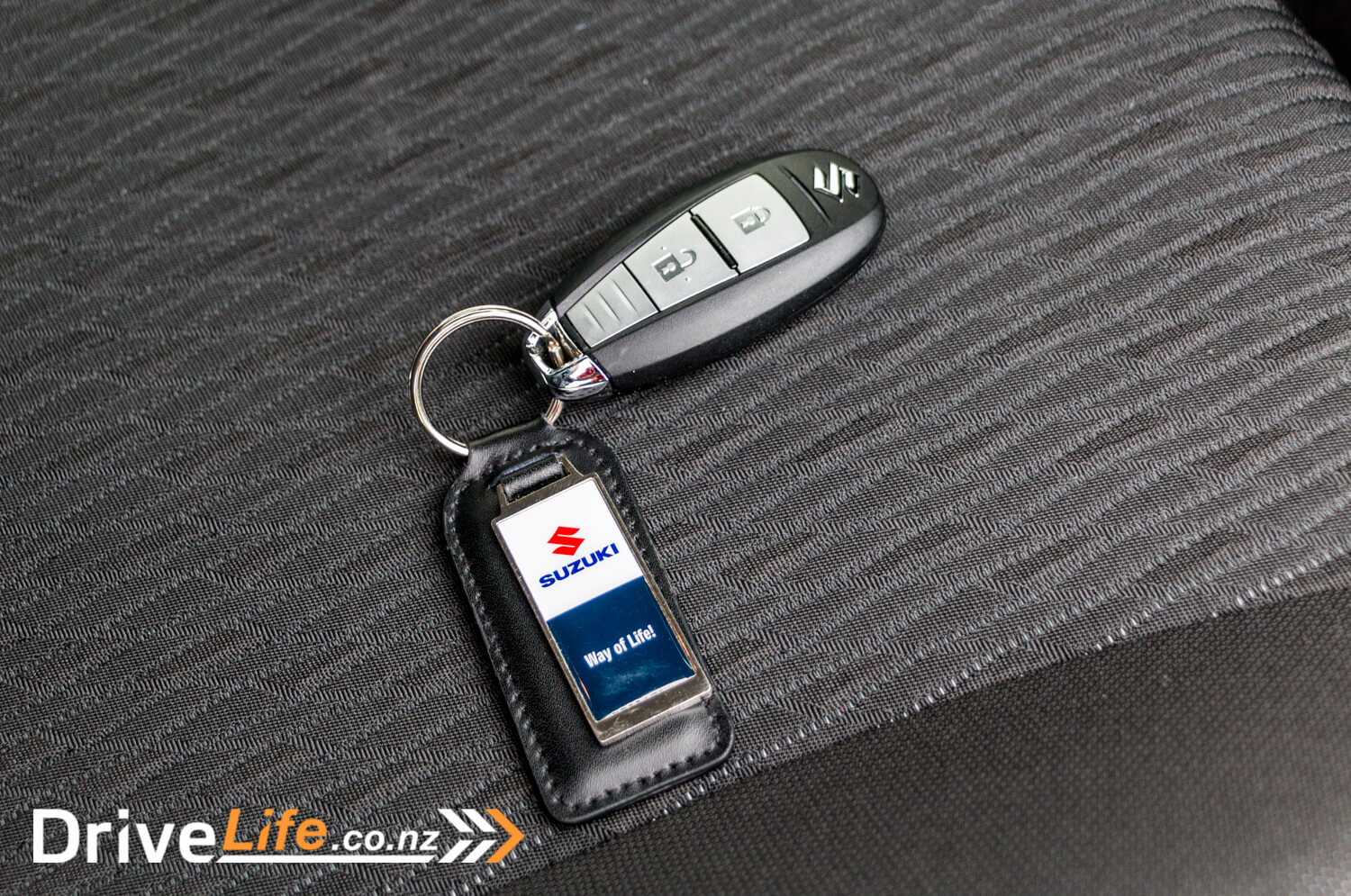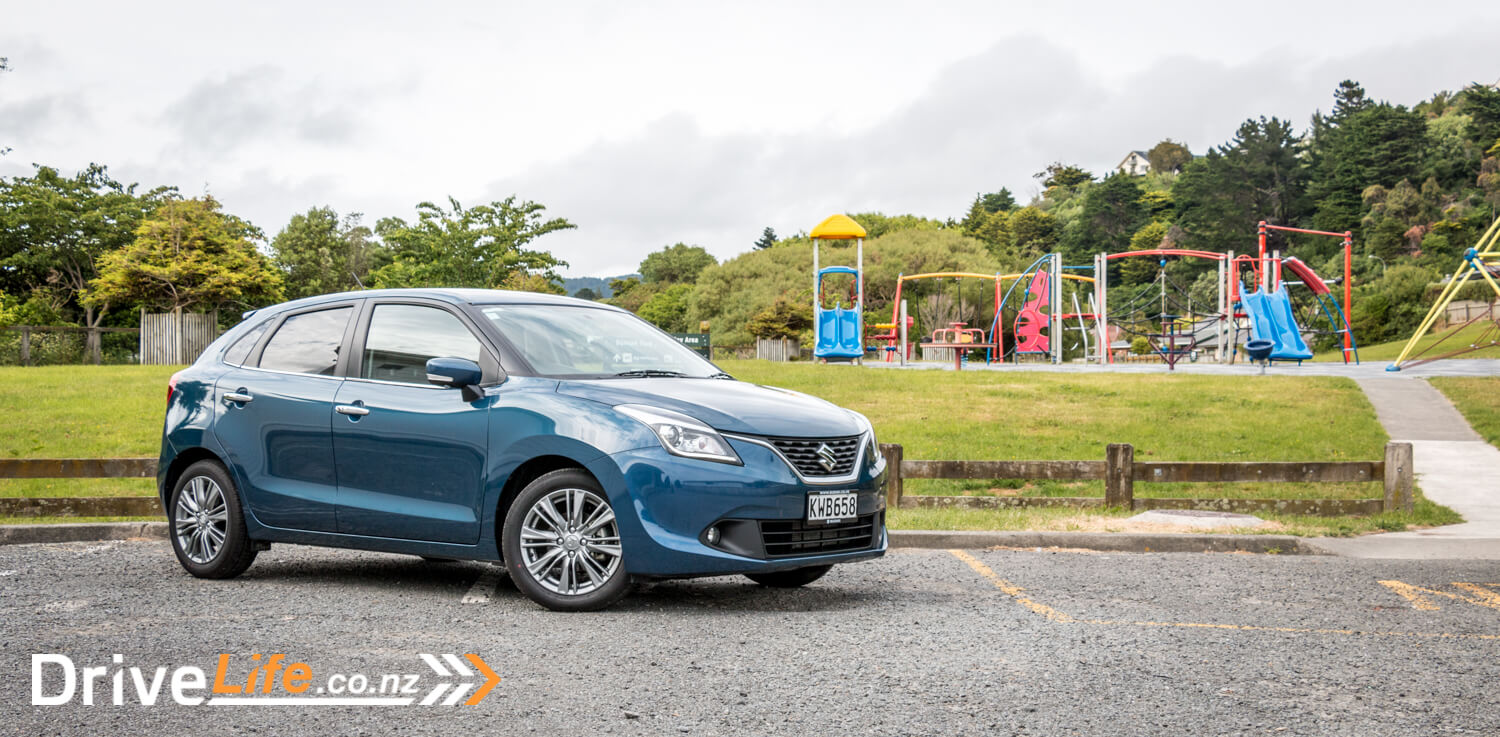Like the Suzuki Swift but want more space? The Baleno might be the car for you! Based on the last generation Suzuki Swift but with a bigger body, there’s now an RS version. How does it compare to the new Swift? We tested one for a week to find out.

The Range
There are four specs of Baleno available, starting with the GLX manual priced at $21,990. Standard across the range are cruise control, satnav, 6 speaker stereo with Bluetooth, Android Auto and Apple Carplay, aircon, auto lights, LED running lights, ESP, ABS, EBD, Brake Assist, 6 airbags, seatbelt pre-tensioners, 15” alloys and a four cylinder 1.4l engine producing 68kW/130Nm. The GLX Manual has a 5-speed manual transmission.
Next is the GLX Auto at $23,990 with a 4-stage automatic. Followed by the LTD auto priced at $24,990 which adds front fog lamps, 16” alloys, and that seems to be it.
Finally we have the RS, priced at $25,990, which changes to a 1.0l three-cylinder turbo engine producing 82kW and 160Nm, connected to a 6-stage auto transmission. It adds keyless entry and start, 4-way adjustable steering wheel, climate control, extra displays, paddle shifters, HID headlights, rear disc brakes and extra chrome exterior details.
There are just four colours – white, silver, red and blue.
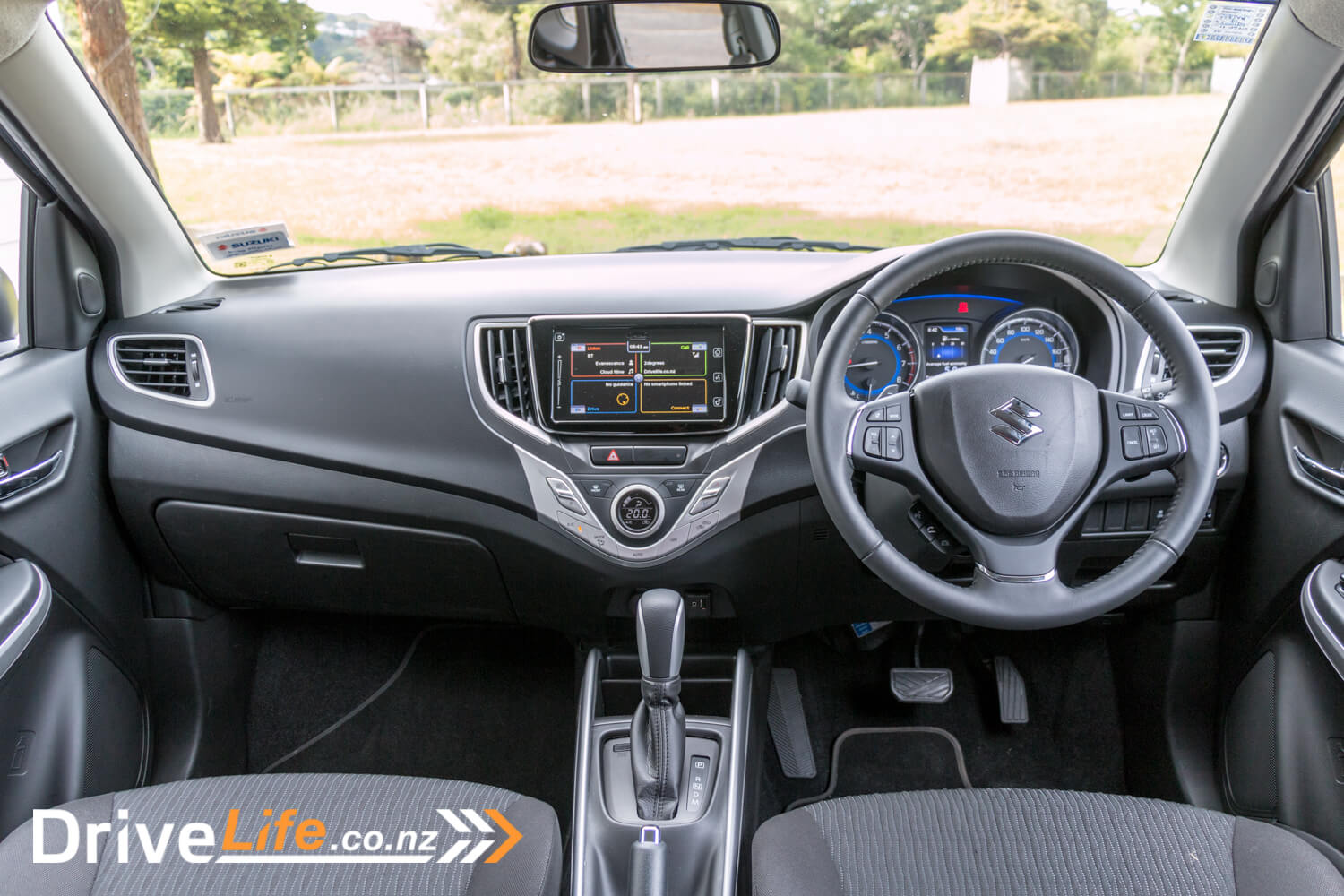
First Impressions
I have to admit, at first glance I wasn’t keen on the front of the Baleno. The side and rear views are much better but the front doesn’t look quite right to me. I do like the way they’ve continued the lines of the chrome grille through the headlights. They’ve also blacked out the A and B pillars to give a kind of floating roof effect, and created a chrome swoop line up the side which looks good, but hinders the view from the back seat for smaller kids.
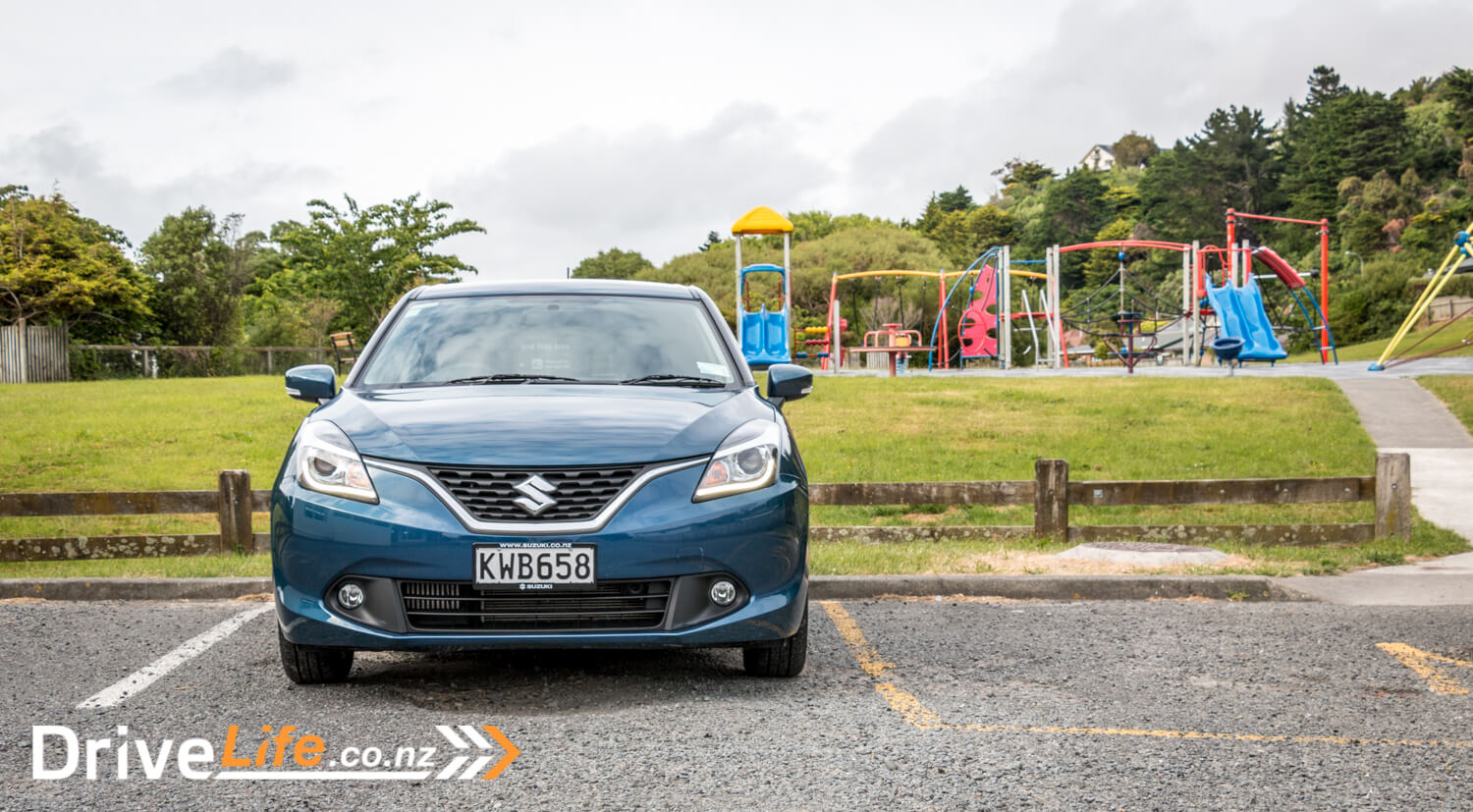
The Inside
Inside, the Baleno feels light and spacious, with a cream headliner helping with that airy feeling. The dash is a simply designed big grey slab with a large touch screen in the centre. It’s the same unit that Suzuki fit in the new Swift and Ignis and when I saw it I was a bit concerned as I had some issues with that unit in other Suzukis. There are a few silver buttons and highlights but they have a very plasticky look and feel. Despite that they improve the looks of the dash and break up the grey nicely. The controls are big and easy to use, and I like the little circular central display for the climate control.
The instrument cluster looks great, with two big, clear analogue dials for speedo and rev counter. I really like the blue detailing and white lettering. There’s a central colour digital display which can show all manner of information including trip computer, fuel usage, and unusually power/torque, G-force meter, and an acceleration graph. One thing that is missing is a digital speedo. The displays are changed and set using two sticking-out knobs at either side of the cluster, which are a bit awkward to get to behind the steering wheel. It’s not something you’re likely to fiddle with much but it’s an unusual way to do it.
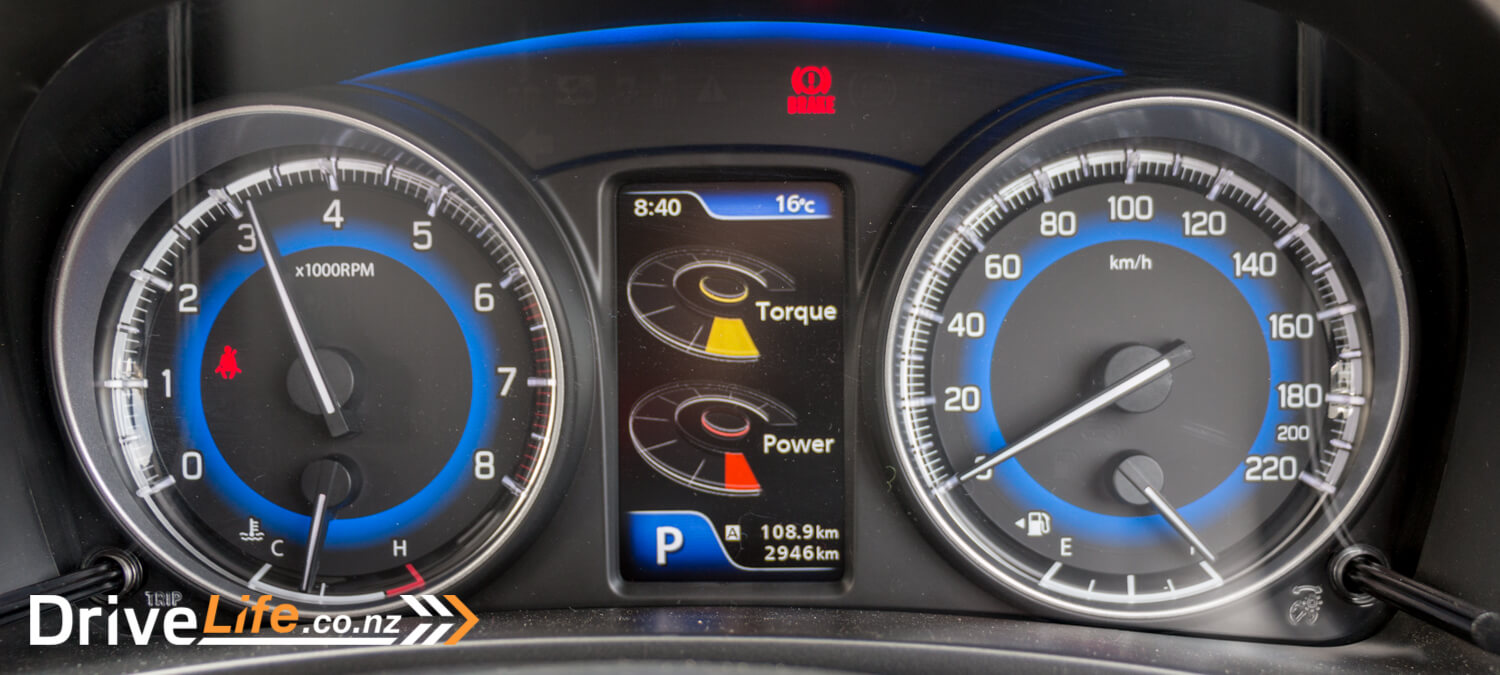
The steering wheel is leather-trimmed and feels good in the hands. It has thumb controls for the stereo and cruise control which are well designed and easy to use. It adjusts in four directions, unlike the ones in the non-RS versions of this car which only adjust for height. The seats look pretty basic but they’re comfortable and easily adjusted to a good driving position. They have the same squashy side bolsters as the new Swift and Ignis, which seem to me like they will wear poorly but I’m told by some long-time Suzuki owners that they hold up and wear very well.
The rear seats are quite firm, but also comfortable, and there’s plenty of legroom for four adults to sit in comfort. Other than electric windows there are no creature comforts in the rear, not even an arm rest, but then again there’s nothing for the kids to muck around with either.
The boot is a generous 355 litres, and it’s very deep, partly helped in this regard by a space saver spare underneath. Folding the 60/40 split rear seats expands the space to 756 litres, but because it’s such a deep boot you don’t get a flat load space.
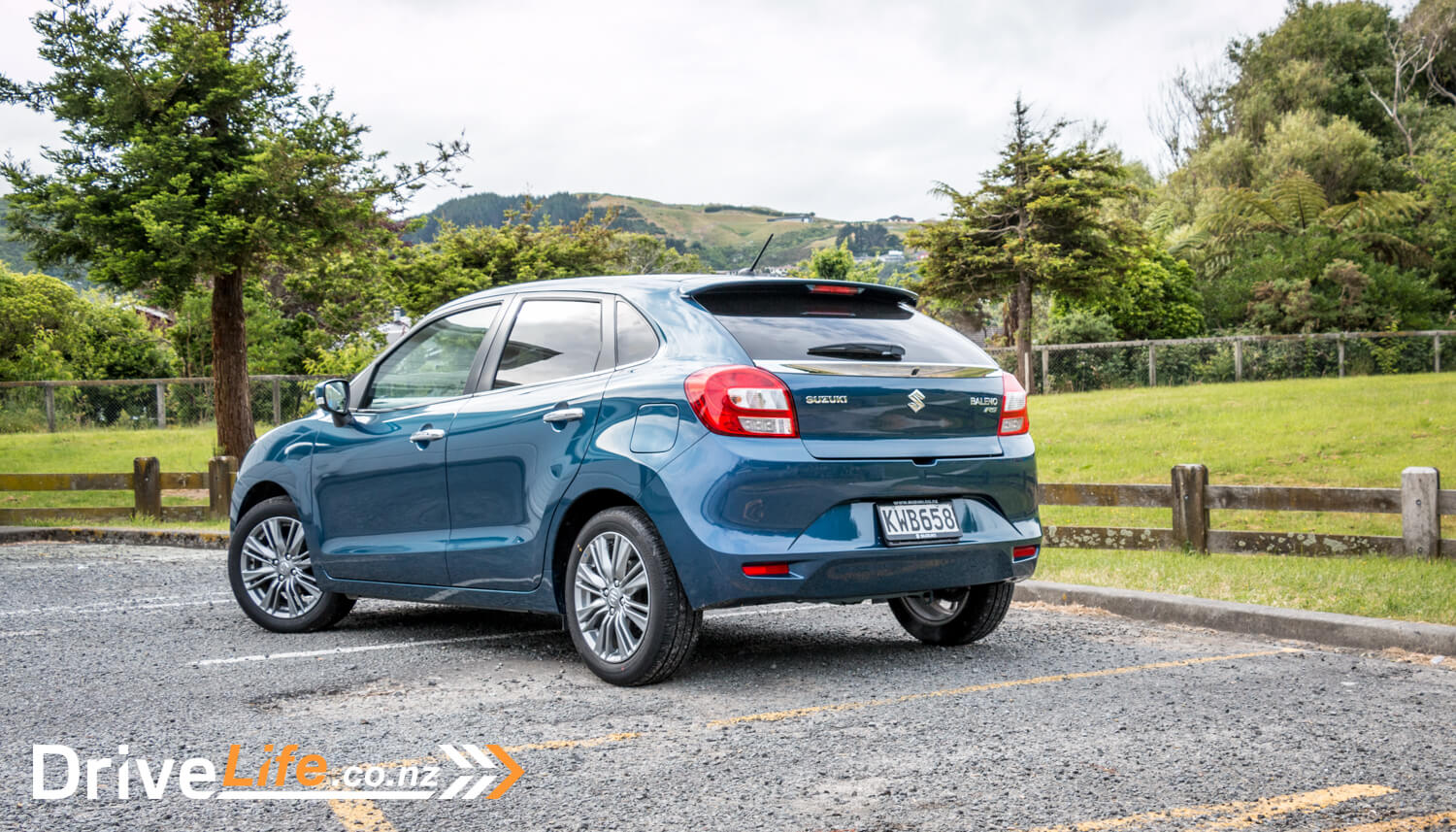
The Drive
My first test of a car is usually how well it does phone connectivity. The last couple of Suzuki’s I’ve tested have been a highly frustrating experience to connect via Bluetooth. This time the pairing went without a hitch, and took seconds to complete. And I’m happy to say I had no other issues with the unit in the week I had the Baleno. The six-speaker system sounds good, and it re-connects automatically to Bluetooth – a feature that a lot of manufacturers don’t include.
The first thing I noticed when driving the Baleno was the steering. It has a curious feel to it which I can only describe as rubbery. It really wants to stay centred and will pull back towards the centre then manoeuvring slowly in car parks. When driving along it’s not as noticeable, and it’s not a bad thing, just unusual at first. Likewise with the brake pedal – the brakes are excellent with discs all round, but the pedal has a strangely springy feel to it. These are just little quirks that don’t detract from the drive but are a bit unusual.
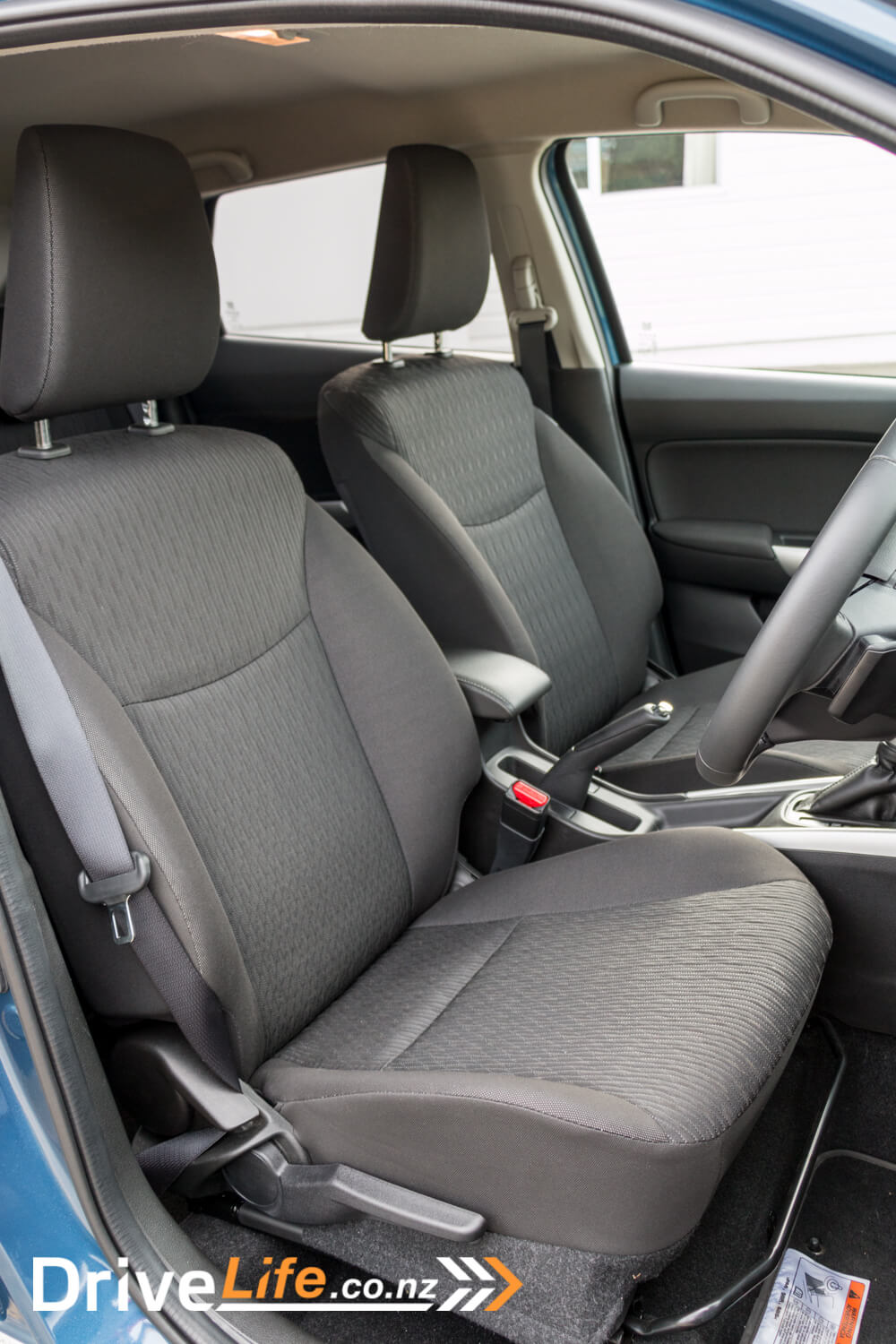
The 1.0 litre Boosterjet three cylinder turbo engine is great – it makes 82kW which doesn’t sound like that much, but in a car that weighs only 950g it’s plenty of power, even with two or three adults on board. I love the sound of a three cylinder, and this one makes a lovely little growl when accelerating, prompting the occasional grin from me.
The six-speed automatic transmission is a good match to the engine and is not really noticeable most of the time, just doing its job well. This is definitely a good thing. The Baleno has that nippy feel that I like in a small car and it’s fun to zip around the city streets in. The small 4.9m turning circle also helps. Power delivery can sometimes come in a bit of a surge – a symptom of having a small turbocharged engine – but overall the powertrain is really good.
The Baleno is based on the Swift platform, which was always renowned for its handling, and as you’d expect, this car handles well too. There’s a little bit of body roll, but the Baleno RS corners well and is fun to chuck around on a twisty road. Bumps are absorbed nicely and the ride is very good. At higher motorway speeds there’s some wind noise and a bit of road noise but it’s certainly not loud or unrefined.
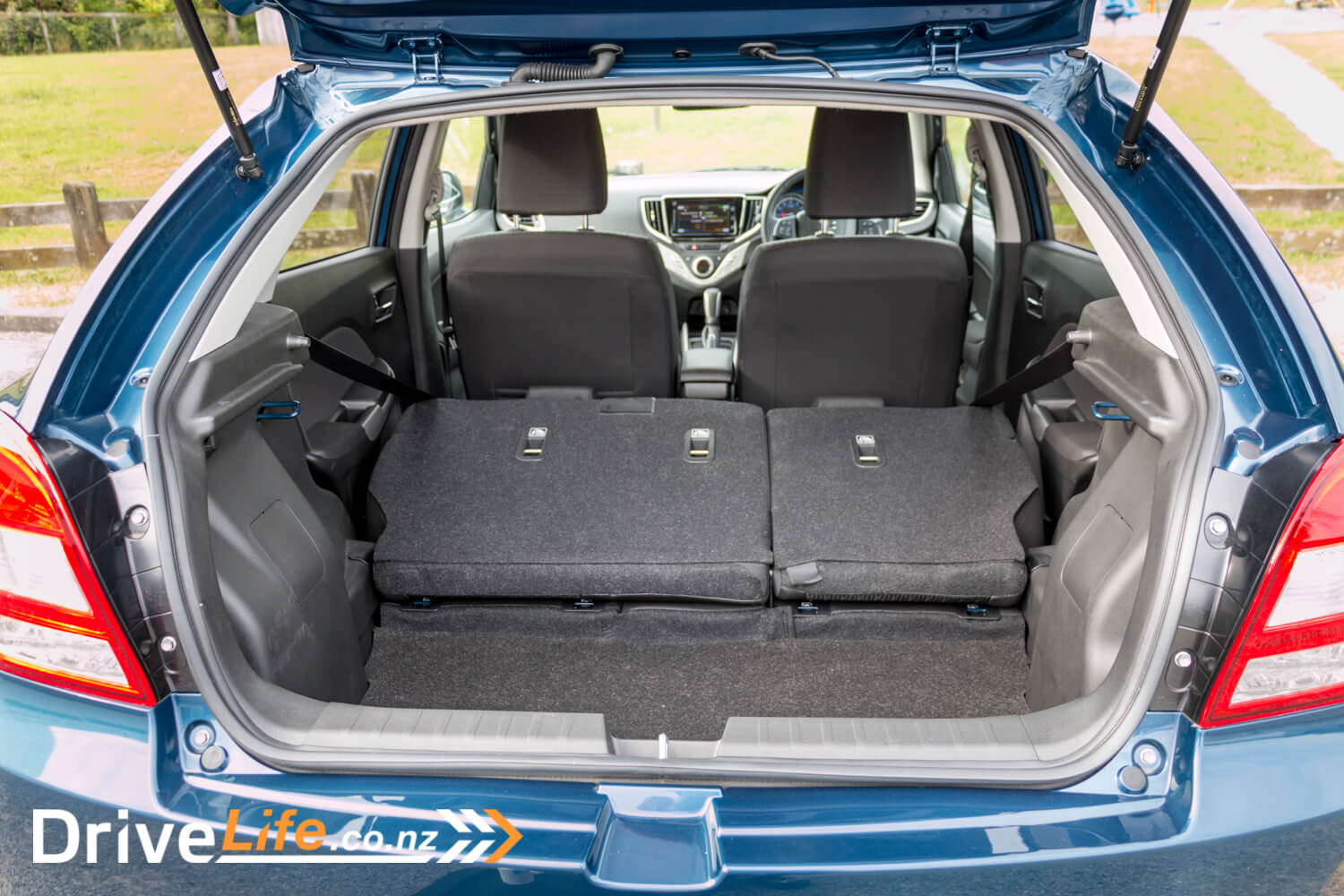
The Competition
| Brand / Model | Engine | Power | Fuel L/100km | Seats | Boot Space Litres | Price Highest to Lowest |
| Ford Fiesta Sport | 1.0l 3 cylinder turbo | 92kW/170Nm | 5.3 | 5 | 292 | $28,840 |
| Peugeot 208 Allure | 1.2l 3 cylinder turbo | 81kW/205Nm | 4.5 | 5 | 285 | $27,990 |
| Citroen C3 Exclusive | 1.2l 4 cylinder turbo | 81kW/205Nm | 4.9 | 5 | 379 | $26,990 |
| Renault Clio Expression | 1.2l 4 cylinder turbo | 88kW/190Nm | 5.2 | 5 | 300 | $26,990 |
| VW Polo TSI Comfortline | 1.2l 4 cylinder turbo | 66kW/160Nm | 4.7 | 5 | 280 | $26,990 |
| Honda Jazz RS | 1.5l 4 cylinder | 97kW/155Nm | 5.4 | 5 | 359 | $26,600 |
| Mazda2 GSX | 1.5l 4 cylinder | 81kW/141Nm | 4.9 | 5 | 280 | $26,545 |
| Suzuki Baleno RS | 1.0l 3 cylinder turbo | 82kW/160Nm | 5.2 | 5 | 355 | $25,990 |
| Suzuki Swift RS | 1.0l 3 cylinder turbo | 82kW/160Nm | 5.1 | 5 | 242 | $25,990 |
| Kia Rio EX | 1.4l 4 cylinder | 74kW/133Nm | 6.2 | 5 | 325 | $25,490 |
| Holden Barina LS | 1.6l 4 cylinder | 85kW/155Nm | 7.2 | 5 | 502 | $24,490 |
| Skoda Fabia TSI Ambition | 1.2l 4 cylinder turbo | 81kW/175Nm | 4.7 | 5 | 310 | $25,390 |
| FIAT 500X Pop | 1.4l 4 cylinder turbo | 103kW/230Nm | 6.0 | 5 | 350 | $22,990 |
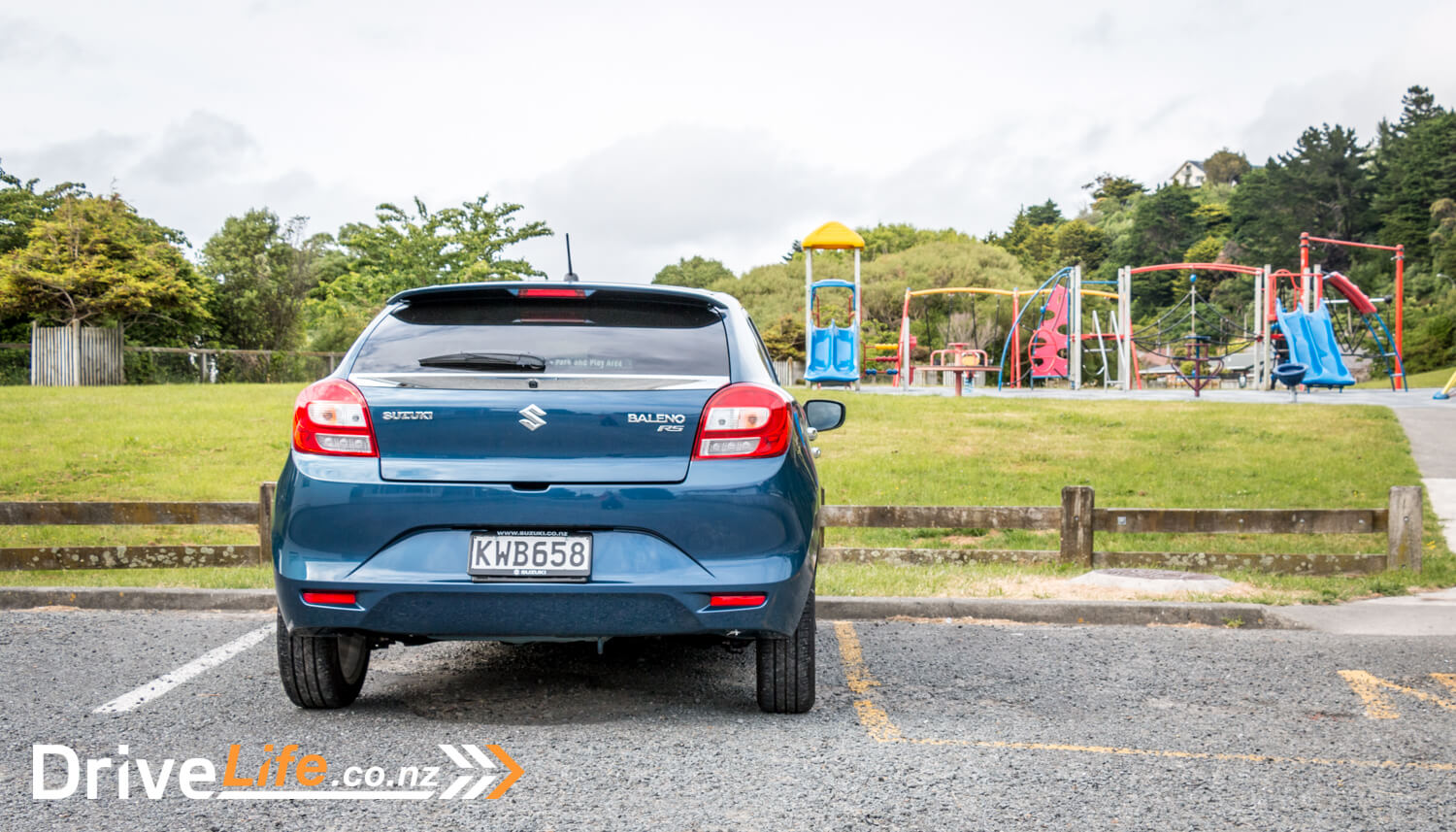
The pros and cons
| Pros | Cons |
|
|
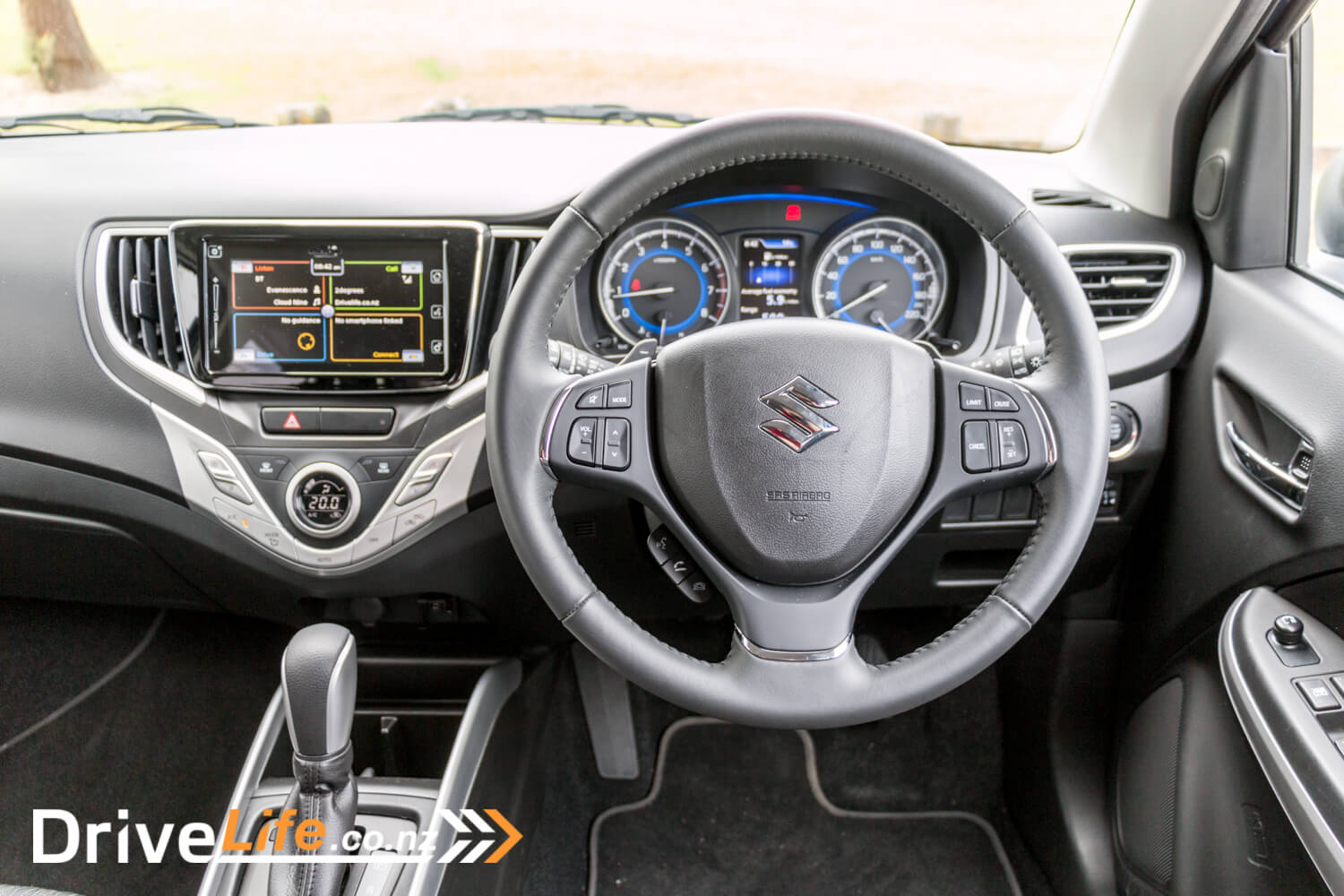
What we think
I enjoyed my week with the Baleno, in fact I liked it more than the new Swift and Ignis. It has some quirks, and lots of plastic interior bits, but the important things are there. It goes and stops well, handles well, is easy to park and get around the city, and there’s a good amount of space inside.
Rating – Chevron rating (4 out of 5)

| Vehicle Type | Small hatchback |
| Starting Price | $21,990 + on-road costs |
| Tested Price | $25,990 + on-road costs |
| Engine | 1.0l 3 cylinder turbo |
| Transmission | 6-stage auto |
| 0 – 100 kph | Not quoted |
| Spare Wheel | Space saver |
| Kerb Weight, KG | 975 |
| Length x Width x Height, mm | 3995 x 1745 x 1470 |
| Cargo Capacity | 355 litres rear seats upright
756 litres rear seats folded |
| Fuel Tank, litres | 37 |
| Fuel Efficiency | Advertised Spec – Combined – 5.2L / 100km
Real World Test – Combined – 7.5L / 100km |
| ANCAP Safety Ratings | Not yet tested Euro NCAP score 4 stars |
| Warranty | 3 year/100,000km new vehicle warranty
2 year powertrain warranty extension 5 year Suzuki roadside assistance plan |
